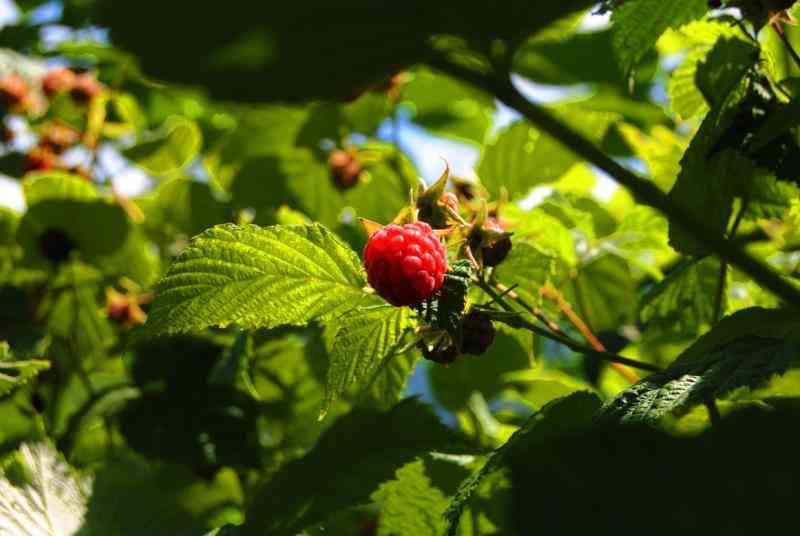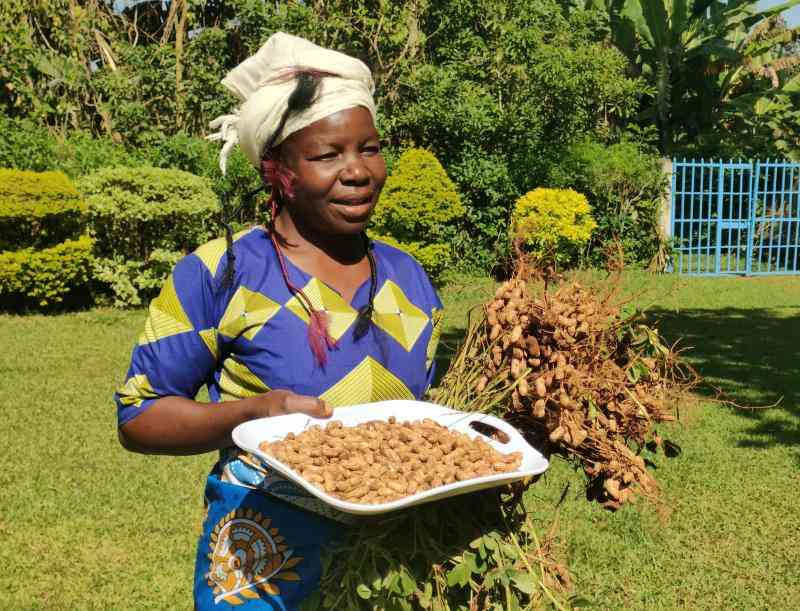
Raspberries are a shrub belonging to the Rosaceae family, in the genus Rubus. [Standard]
Raspberry farming is a potentially profitable horticultural venture that can earn farmers an extra coin.
A huge percentage of the available raspberries in Kenya are imported. In value terms, the largest raspberry, blackberry and cranberry suppliers to Kenya are the Netherlands, the United States and South Africa, together accounting for 72 per cent of total imports, according to Indexbox.
Raspberries are a shrub belonging to the Rosaceae family, in the genus Rubus. Not only are raspberries perfect for picking and eating straight off the stem, but they are also wonderful in jams, pies and smoothies. Plus, fresh raspberries are an excellent source of vitamin C to support the immune system and help fight infections.
- The hidden market for organic products in Busia
- Azolla: The super protein in animal feed
- Equity secures Sh141m funding for smallholder farmers
- Nakuritis: Why It is unique to Nakuru County
According to Alfred Njuguna, a farmer from Muranga County, it is advisable to have a ready market for your produce, since raspberries are highly perishable. He sells the produce in supermarkets.
Ecological conditions
Raspberries are sensitive to high temperatures and grow best when daytime temperatures are around 25 degrees celsius. They are best suited to well-draining sandy loam soil, rich in organic matter and have a pH between 5.5 and 6.5.
"Drainage it critical in raspberry propagation as the plants are susceptible to root rot. Plants require full sunlight and should not be planted in low-lying areas where water may build up," says Njuguna.
Planting and trellising
Many raspberry varieties are very vigorous and using a support system such as a trellis will help to protect the canes from wind damage while also supporting the weight of the fruit. The trellis should be constructed before or at planting to avoid damaging the young plants.
Raspberry plants are usually grown from bare root plants or from tissue-cultured plants. Alternatively, which is easier, get seedlings from reputable firms. Dig one to two inch hole deep and place the seedlings up to the stem level. Once this is done make sure to have enough organic compost surrounding the hole.
Raspberries are usually planted in rows. Plant approximately 70 cm apart, allowing 2.4 to 3 metres between rows.
Raspberries also require a post-support system or trellis to support the weight of the fruit on the canes. Raspberry canes are biennial and produce fruit in the second year of growth.
"Avoid planting raspberries where peppers, eggplant, tomatoes or potatoes have been grown previously as these plants are host to verticillium fungi which can cause root rot in raspberries," says Njuguna.
Pruning
Prune raspberries immediately after picking. Cut only the canes that produced berries. Remember this plant produces berries on two-year-old canes while one-year-old canes grow right beside them.
You should not have trouble telling which is which: the older canes have brown stems, and the young ones are still green. Prune only the older ones, the ones that have finished their fruitful year.
Pest and diseases
Diseases include cane blight, gray mould, raspberry leaf spot, spur blight, yellow rust, mosaic disease, fire blight and raspberry bushy dwarf.
"Use healthy and disease free seed materials, remove and burn the infected parts. Remember good sanitation practices are important for preventing the introduction of disease into the plantation. One of the most effective methods of preventing the disease is to plant raspberry varieties which are resistant to the disease," Njuguna says.
Common pests include insects such as beetles, black vine weevil, strawberry weevil and clay-coloured weevil. If possible, handpick the insects from the plants.
Harvesting and yield
Raspberries may vary from light to dark red and purple from red to almost black. Some berries are slightly resistant to picking from the vine and others slip off easily. Once you have ascertained that you have enough ripe berries to pick, it's time to dive in.
Pick berries as early in the morning as possible. If they are still drenched with dew or rain, let them dry prior to picking to lessen the chances of moulding. Gently pluck them from the cane and place, don't drop them, into a container. Use a shallow container so you don't squash all the berries on the bottom with the weight of the harvest atop.
"Raspberries do not ripen all at once, but instead over a couple of weeks. So, when in doubt of a berry's readiness, leave it on the vine for a day or two to ensure it is fully ripe," advices Njuguna.
Once harvesting is done, do not wash fruits to avoid lowering the quality of the product. Washing berries makes them soggy therefore reducing quality and shelf life. Each shrub can produce about four to five kilos of fruit, depending on conditions. He packs them in 125 grams packet which are sold at Sh200.


